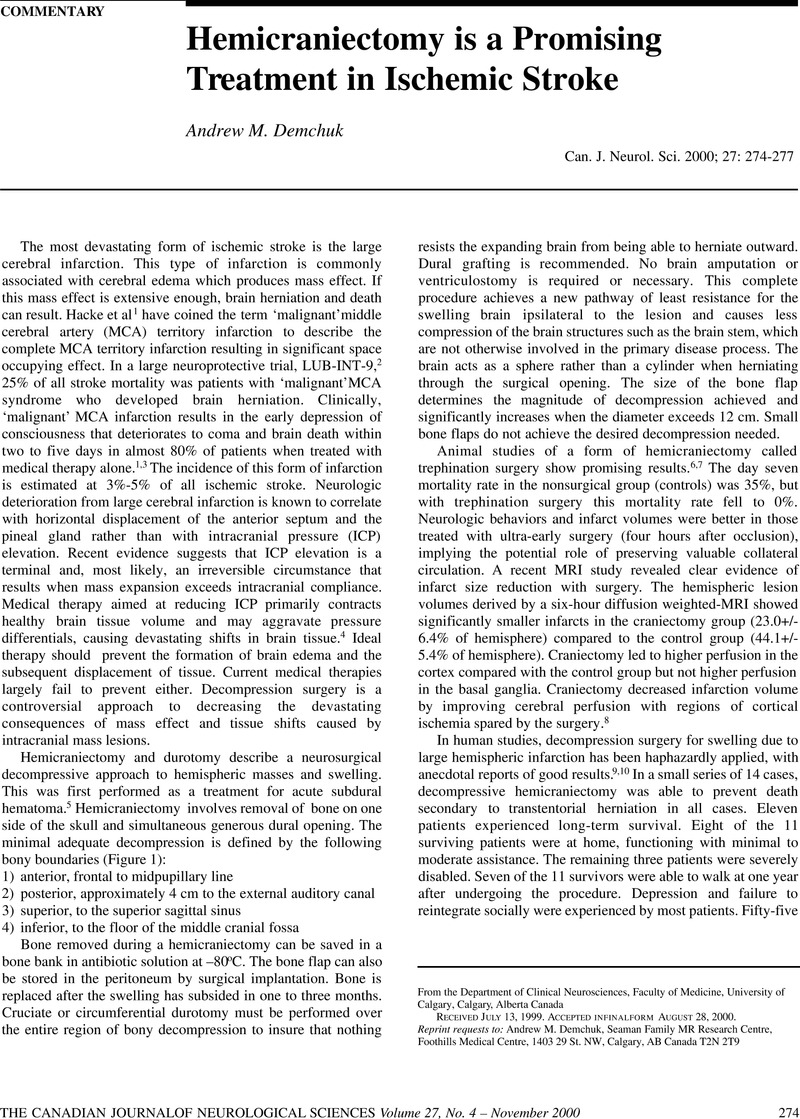Crossref Citations
This article has been cited by the following publications. This list is generated based on data provided by Crossref.
Ayata, Cenk
and
Ropper, Allan H.
2002.
Ischaemic brain oedema.
Journal of Clinical Neuroscience,
Vol. 9,
Issue. 2,
p.
113.
Lees, Kennedy R
2002.
Management of acute stroke.
The Lancet Neurology,
Vol. 1,
Issue. 1,
p.
41.
Foerch, Christian
Lang, Josef M.
Krause, Jochen
Raabe, Andreas
Sitzer, Matthias
Seifert, Volker
Steinmetz, Helmuth
and
Kessler, Kirn R.
2004.
Functional impairment, disability, and quality of life outcome after decompressive hemicraniectomy in malignant middle cerebral artery infarction.
Journal of Neurosurgery,
Vol. 101,
Issue. 2,
p.
248.
Malkoff, Marc
and
Alexandrov, Andrei V.
2004.
Cerebrovascular Ultrasound in Stroke Prevention and Treatment.
p.
213.
Subramaniam, Suresh
and
Hill, Michael D.
2005.
Massive Cerebral Infarction.
The Neurologist,
Vol. 11,
Issue. 3,
p.
150.
Schneck, Michael J.
and
Origitano, Thomas C.
2006.
Hemicraniectomy and Durotomy for Malignant Middle Cerebral Artery Infarction.
Neurologic Clinics,
Vol. 24,
Issue. 4,
p.
715.
Schneck, Michael J.
and
Origitano, Thomas C.
2008.
Hemicraniectomy and Durotomy for Malignant Middle Cerebral Artery Infarction.
Neurosurgery Clinics of North America,
Vol. 19,
Issue. 3,
p.
459.
Manawadu, Dulka
Quateen, Ahmed
and
Findlay, J. Max
2008.
Hemicraniectomy for Massive Middle Cerebral Artery Infarction: A Review.
Canadian Journal of Neurological Sciences / Journal Canadien des Sciences Neurologiques,
Vol. 35,
Issue. 5,
p.
544.
Sengupta, Sudip Kumar
Shashivadhanan, S.
Mathai, K.I.
and
Sudumbrekar, S.M.
2012.
In decompressive craniectomy procedures it does not matter which way you do the duraplasty, or, does it? A study on an experimental model.
The Indian Journal of Neurotrauma,
Vol. 9,
Issue. 2,
p.
93.



